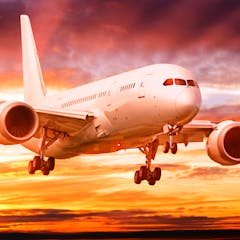
Articles on Sensors
Displaying 1 - 20 of 34 articles

What if plants in the area surrounding a nuclear reactor could act as radiation detectors, with the help of a drone?

Your car’s safety technology takes you into account. But a lot of that technology helps car companies collect data about you. Researchers are working on closing the gap between safety and privacy.

Scientists don’t know what prompts turtle hatchlings to emerge from their nests and head for the water, but vibrations appear to play a role.

Even a burner phone paid for with cash can reveal your identity and where you’ve been. A data privacy expert explains.

The Agricultural Internet of Things is making farming more efficient. An information technology expert describes some of the challenges of working with sensors and antennas underground.

Even a burner phone paid for with cash can reveal your identity and where you’ve been. A data privacy expert explains.

Sensors that measure sweat could be coming to the market soon, but for them to be useful, we’ll need to understand more about this fluid that our body produces.

Sensors are everywhere, from your phone to your medicine cabinet. Here’s how they turn events in the physical world into words and numbers.

An optical sensor that can detect individual molecules promises early detection of diseases and environmental contamination.

Driverless vehicles rely heavily on sensors to navigate the world. They’re vulnerable to attack if bad actors trick them into ‘seeing’ things that aren’t there, potentially leading to deadly crashes.

Advancements in data analytics can prevent food wastage and save farmers from significant losses along the fresh produce value chain.

Brain functions integrate and compress multiple components of an experience, including sight and smell – which simply can’t be handled in the way computers sense, process and store data.

Nearly half of patients with congestive heart failure who are hospitalized and then discharged end up back in the hospital within 90 days. Could a toilet seat help prevent this from occurring?

During a military mission, whether in peace or in war, the inability to identify an object within an area of operation represents a significant problem.

A pilot and researcher knows that airplanes are full of sensors – and finds a way onboard computers can use the data to detect equipment failure and tell pilots what’s a real emergency and what’s not.

Globalization is making it harder to identify and trace outbreaks of foodborne illness. Technology can help, but consumers may also have to rethink their food choices.

From offshore oil and gas to the homes of people with disabilities, this is emerging as one of the most exciting areas of tech.

One-third of roads in the U.S. are unpaved; plenty more have faded or obscured road markings. Today’s self-driving vehicles can’t go on them, and will need new algorithms to handle those conditions.

UV ratings indicate risk of skin damage – but they’re based on pale skin. New wrist bands designed for six different tones of skin provide a more personalised way to track safe UV exposure.

One way to make sensors small is to make them out of something that’s incredibly small in the first place, such as DNA.
